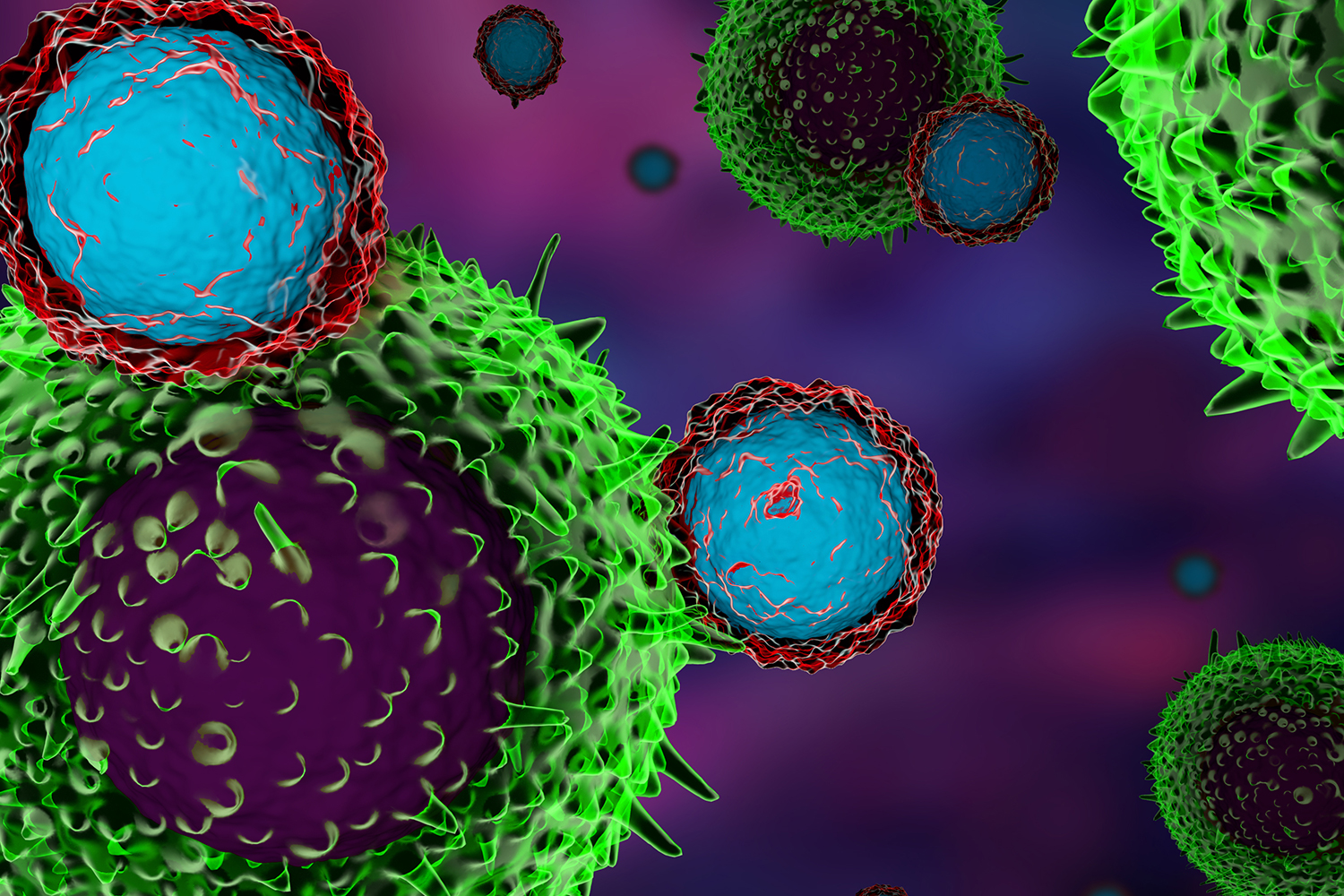
Research News From the AACR Journals
In a study published in Cancer Research in July, researchers found that a diet that encourages healthy eating and physical activity and discourages alcohol consumption was associated with a lower overall cancer risk, as well as reduced risks of breast, prostate, and colorectal cancer.
The study evaluated three previously validated nutritional recommendations: the WCRF/AICR score, the Alternate Healthy Eating Index, and the French Nutrition and Health Program-Guidelines Score, as well as one relatively new index, the MEDI-LITE score, which measures adherence to a Mediterranean diet. Researchers found that all the diets were associated with some reduced risk, but the WCRF/AICR recommendations, developed specifically with cancer prevention in mind, had the strongest association with reduced risk.
The study was conducted using data from a French cohort. Because previous research has shown that the French consume more fruits and vegetables and fewer sugary beverages and processed foods than Americans, the authors said adhering to the WCRF/AICR recommendations would likely yield more dramatic results in an American population.
To learn more about the AACR journal, Cancer Research, watch this video of Chi Van Dang, Editor-in-Chief.
According to results from a study published in Cancer Immunology Research in July, first-line treatment with an immune checkpoint inhibitor was associated with a 1.4-fold increase in median overall survival among patients with cutaneous melanoma who had brain metastases (MBM).
In a national cohort, first-line treatment of MBM patients with an immune checkpoint inhibitor was associated with an increase in median overall survival from 5.2 months to 12.4 months. Furthermore, the treatment was associated with an increase in the four-year overall survival rate for this group of patients from 11.1 percent to 28.1 percent.
Treatment with immune checkpoint inhibitors has yielded long-lasting treatment responses in many patients with melanoma; however, most clinical trials had included few melanoma patients with brain metastases, so it remained unclear what the survival benefits of these therapies would be for these patients. These latest data prove that this type of therapy is beneficial for MBM patients.
Data from a study published in Cancer Discovery in March showed that bacterial load was significantly higher in pancreatic tumor samples from patients with pancreatic ductal adenocarcinoma compared with pancreatic tissue from normal individuals. In studies using mice, eliminating certain “bad” bacteria slowed the growth of pancreatic cancer, reversed immune suppression, and increased the levels of the immune checkpoint protein PD1.
The researchers also found that combining antimicrobial treatment with an anti-PD1 immunotherapy drug enhanced the activation of certain immune cells in mice, suggesting that such a combination is a potential treatment option for pancreatic ductal adenocarcinoma.
Data published in Cancer Epidemiology, Biomarkers & Prevention in March showed that despite the steady increase of liver cancer incidence in the U.S. in recent decades, data from 2015 indicate that less than 13 percent of individuals born between 1945 and 1965 are estimated to have undergone screening for hepatitis C virus (HCV).
The authors found that females were screened less often than males in every age cohort. Among baby boomers and those born between 1966 and 1985, HCV screening rates were lower among Hispanics and non-Hispanic blacks. HCV screening rates in this population ranged from 11.9 percent in 2013 to 12.8 percent in 2015. Less than 20 percent of baby boomers reported that the reason for their screening was due to their age.
The study emphasizes the need for additional efforts to get baby boomers screened and treated for HCV in order to reduce the rising rates of liver cancer.
To learn more about the AACR journal, Cancer Epidemiology, Biomarkers & Prevention, watch this video of Timothy R. Rebbeck, PhD, Editor-in-Chief.
Results published in Clinical Cancer Research in June showed that with each decade of life, the likelihood of progression of melanoma after treatment with anti-PD1 immunotherapy decreased by 13 percent.
In this multinational study, the researchers analyzed data from 538 patients with melanoma treated with the anti-PD1 therapy pembrolizumab (Keytruda) at eight different facilities worldwide. Of the patients, 238 were younger than 62 years. They found that 50 percent of patients younger than 62 years, compared with only 37 percent of patients 62 years or older, had poor response to the treatment.
Data also showed that preconditioning the tumor microenvironment in younger patients by depleting a type of immune cell called Tregs could make them respond better to anti-PD1 immunotherapies.
To learn more about the AACR journal, Clinical Cancer Cancer, watch this video of Keith T. Flaherty, MD, Editor-in-Chief.
According to data published in Cancer Prevention Research, compared with nondrinkers, men who consumed at least seven drinks in a week during adolescence (ages 15-19) had 3.2 times the odds of being diagnosed with high-grade prostate cancer. Similar associations were observed among those who consumed at least seven alcoholic drinks per week at ages 20-29, 30-39, and 40-49, resulting in 3.14, 3.09, and 3.64 times the odds of high-grade prostate cancer, respectively, compared with nondrinkers.
The authors also evaluated the association between cumulative lifetime alcohol consumption and prostate cancer diagnosis. Comparing the lowest one-third of men in the study in terms of lifetime alcohol intake with the highest one-third, men in the highest one-third had three times the odds of being diagnosed with high-grade prostate cancer at biopsy.
Data from a study published in Clinical Cancer Research showed that Hispanic pediatric patients were more likely than non-Hispanic whites to develop neurotoxicity when they receive methotrexate chemotherapy for acute lymphoblastic leukemia (ALL). ALL is the most common form of pediatric cancer but has a survival rate of about 90 percent. However, children from minority populations experience lower survival rates than white children.
The study found that 39 patients, or 13.9 percent, of the 280 newly diagnosed ALL patients from three pediatric cancer treatment centers experienced neurotoxicity. Patients who experienced neurotoxicity received an average of 2.25 fewer doses of intrathecal methotrexate. Many patients who experience neurotoxicity are treated with leucovorin, which can prevent the side effects of methotrexate. But previous research has suggested that leucovorin may also reduce the efficacy of methotrexate, contributing to poorer survival outcomes. In this study, six of the 39 patients (15.4 percent) who experienced neurotoxicity had a relapse of ALL.
To learn more about the AACR journal, Clinical Cancer Cancer, watch a video of Keith T. Flaherty, MD, Editor-in-Chief.





